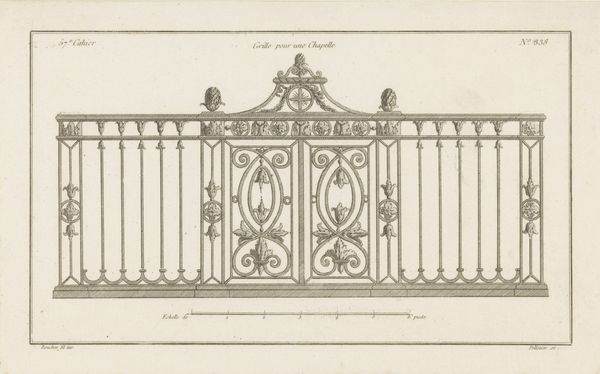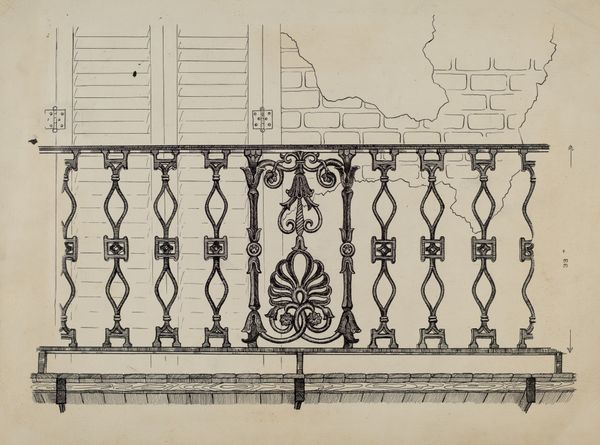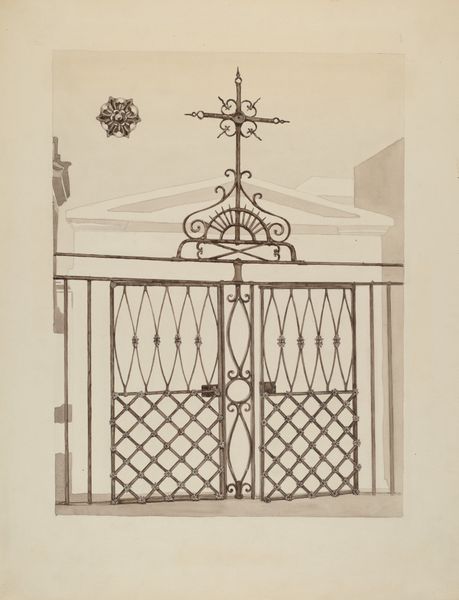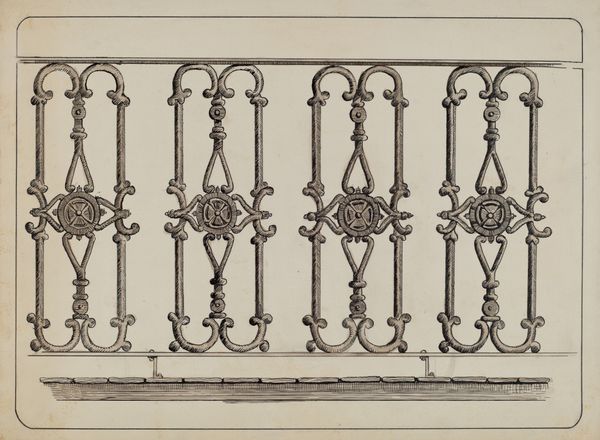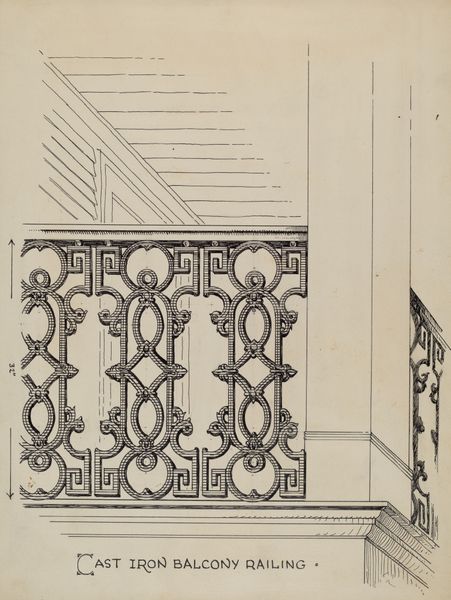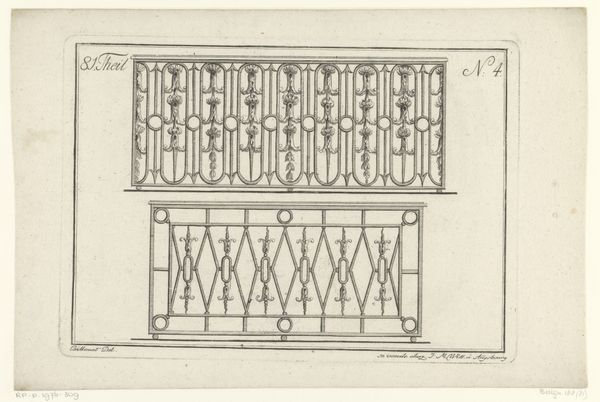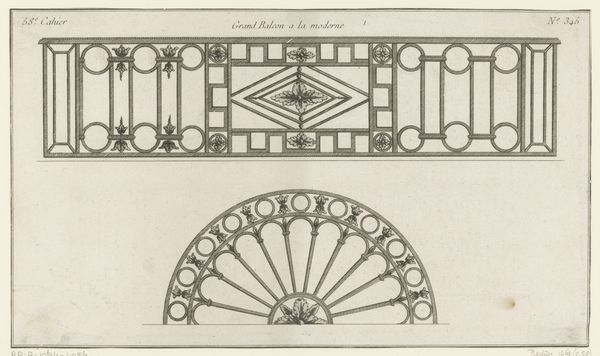
drawing
#
drawing
#
geometric
#
line
#
cityscape
#
academic-art
Dimensions: overall: 22.9 x 30.4 cm (9 x 11 15/16 in.)
Copyright: National Gallery of Art: CC0 1.0
Editor: So, this is "Balcony Railing," a drawing from around 1936 by Ray Price. It’s quite architectural, almost like a blueprint, yet feels… nostalgic? What do you see when you look at it? Curator: I see more than just an architectural rendering. This is a very deliberate depiction of civic space. Banks, particularly in the 1930s, were meant to project solidity and security in uncertain economic times. Notice how the drawing emphasizes order and geometric precision, creating a sense of stability, even permanence. Who do you think would be the primary audience of this art? Editor: Presumably people looking for architectural plans for such an embellishment, but you seem to imply it might have wider purpose? Curator: I would argue this drawing is designed to bolster public trust, showcasing the bank's commitment to both functionality and aesthetics. It's a way of saying, "We are invested in this community, in its beauty, its structure." Think of the symbolism, using elegant yet robust ironwork. Editor: That's a really interesting angle! I had thought more about just the form, but the socio-political context makes so much sense. Was there anything significant about using drawings at that time? Curator: Precisely! Drawings are more accessible and interpretable for the local workers. The bank becomes more relatable to the locals if the image can easily speak to them. Editor: So it’s both architectural and propaganda, in a way? Curator: That’s one way to put it! The intersection between art, architecture, and civic identity is always complex, and this drawing offers a fascinating glimpse into that dynamic. I’ve learned to appreciate that it isn’t only meant to look good!
Comments
No comments
Be the first to comment and join the conversation on the ultimate creative platform.
